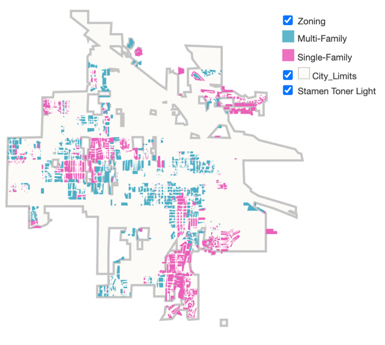Blame Regulations for the High Cost of Housing, Not People
One of the biggest factors constricting the supply of housing is zoning and building regulations imposed by local governments.
“The first lesson of economics is scarcity: There is never enough of anything to satisfy all those who want it. The first lesson of politics is to disregard the first lesson of economics.” – Thomas Sowell
An article published in the Guardian last week claimed that Montana’s housing affordability crisis has been “created by Montana’s booming popularity as a place for people with money.” However, the author did not include a shred of actual data in the article to support this claim.
Experts who have looked at the data conclude that migration is not to blame for Montana’s rising housing costs.
A recent analysis by the Bureau of Business and Economic Research looked at the trends and found no evidence that in-migration was causing Montana’s house price inflation.
Another analysis from this summer found that only 6% of home buyers were from out-of-state in Missoula, MT – one of the hottest markets in the state. The CEO of the Missoula Organization of Realtors, said at the time:
“Regardless of where a buyer originates, the industry in Missoula remains challenged by a lack of supply and rising home costs.”
He’s right. The fact is, there simply aren’t enough homes. Montana’s housing supply isn’t keeping up with demand – regardless of in-state or out-of-state buyer status – and it is absolutely driving up costs.
One of the biggest factors constricting the supply of housing is zoning and building regulations imposed by local governments. For example, Bozeman has effectively made dense, cheap housing illegal in half the city with zoning regulations that allow only for single family style homes – the most expensive type of home to build:

Montana policymakers can’t tell people not to move here. They also can’t tell people to stop buying homes. But they do have it in their power to reduce zoning and building regulations that drive up the cost of housing.
For Liberty,
Kendall Cotton
…
The Latest
Active Forest Management
- A fairly balanced article from the Montana Free Press explores if actively managing our forests really can reduce the risk of fires. They get mixed reviews from the experts they talk to and conclude: “It depends on the fire, the forest and the project.”
Our Take:
Certainly not all forest ecosystems require intensive management and fuel reduction. However, the Forest Service counts a backlog of 80 million acres in need of active restoration. That’s a lot of America’s forests that need to be properly managed!
Unemployment
- The Foundation for Government Accountability released a report showing how Governor Gianforte’s decision to opt-out of expanded federal unemployment payments has led to an economic boom:

Our Take: It’s Economics 101: incentives matter. In this case, paying people not to work depressed the labor force.
Parking Requirements
- Paul, MN, became the latest city to remove its minimum parking requirements:
“With the construction of one parking spot costing anywhere from $5,000 for surface parking to upwards of $50,000 for structure parking, advocates call eliminating parking minimums ‘a free-market approach that opponents of government regulation should embrace.’”
Our Take:
Minimum parking requirements are just another example of how government often makes affordable housing difficult to build, if not outright illegal. Also, minimum parking requirements are not just something found in big cities. We recently noted how Kalispell requires two parking spots even for the smallest housing units. Missoula has similar requirements. Montana local governments should consider following St. Paul’s lead and repealing the onerous regulations entirely.
